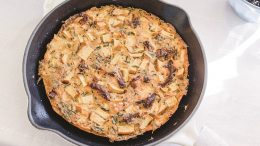Colorful catalogs arrive in the dead of winter and tempt us to start our plants from seed. Here are some tips for choosing and starting seeds successfully.
Seed catalog season, one of my favorite seasons of the year, has begun. Few tasks are more rewarding than growing your own plants from seed. If you haven’t done this before, and you find it intimidating, here are some guidelines to simplify the process.
Which seed catalogs to choose?
Choose seed companies in the Northeast. They provide varieties adapted to our area, whereas more distant companies may offer plant materials best suited to other regions of North America. Some of the companies I have used with good results are: Burpee, Johnny’s Select Seeds, The Cook’s Garden, and Annie’s Heirloom Seeds.
How to read seed catalogs
The best catalogs include details such as the botanical name of the plant, its color, preference for sun or shade, its water requirements, and the mature height and spread of the plant. Another important piece of information is the cold-hardiness zone for the plant. The catalog may tell you the plant is new or improved which means the variety has changed, hopefully for the better. Icons will indicate the plant’s traits: read the key, as the symbols are not the same in all catalogs. You may have been drawn to the plant by its lovely picture, but remember this shows the mature plant at its best; perennials may not look that way the first year. Don’t forget to grow some flowers in your vegetable garden to encourage pollinators. Many annual flowers, like marigolds and zinnias, are very easy to grow from seed; they are great for beginners.
How many seeds to order
For a modest-sized garden, choose the vegetables and varieties your family enjoys most. One packet of seeds of each variety should be plenty. As a general rule, one packet will be enough for a 10 to 30 foot row.
When to start your seedlings
Plan to start your seeds indoors so they are at the correct stage of development to move outside after the last frost. I often wait another week before planting, if the weatherman predicts frost at that time. Follow the instructions on the seed packet and use the calendar to figure out the sowing dates. For example, the instructions on a tomato seed packet may be, “Start seeds indoors 4-8 weeks prior to the last frost of spring.” Always read the directions on the seed packet, as larger seeds, such as beans and corn, do best if you sow them directly into the garden. Write the sowing date on each seed packet and group together with other packets having the same sowing time.
Containers
You will need containers with holes for drainage and trays to catch excess water. Styrofoam cups, plastic tubs, and old plastic cell packs are suitable. I prefer old seed flats. You can purchase a seed starting kit that includes a tray of cells and a humidity dome, but it’s not necessary to spend the money. Most important, your containers must be properly sterilized before using them. Wash them in soapy water and then rinse with a solution of one part chlorine bleach and 10 parts water. Dry thoroughly before adding the growing mix.
Growing mix
Purchase a commercially prepared mix especially for seed starting. The medium should be sterile, loose, well-drained, and of fine texture. Also, buy vermiculite to cover the seeds as this encourages seed germination.
Step-by-step procedure
- Moisten the seed starting mix and fill the container to within ¾ inch from the top.
Remember to make sure the container has adequate drainage. - Use a clean small board to level and firm the mix. Do not press too hard.
- Make shallow rows about 1-2 inches apart with a narrow board.
- Sow seeds uniformly and thinly in the rows. Label the rows immediately, especially when you plant different seeds in one flat. If you are sowing only one type of seed you may scatter them over the surface.
- Cover the seeds with vermiculite to a depth of about two times their diameter, leaving very fine seeds uncovered. Moisten the surface with a fine mist, or place the container in a pan of warm water.
- Cover the container with a plastic film or a plastic bag. No additional watering will be needed until after germination.
- Place the tray in a warm place, not in direct sunlight, with a temperature of 65–75° F. You can use a heated seed-starting mat.
- Once seedlings emerge, remove the plastic film and place the container in a bright south-facing window, or under a fixture equipped with two cool white fluorescent tubes. Leave the seedlings under the lights for 14-16 hours each day. Do not overwater: allow drying between watering, being careful the seedlings don’t wilt.
- If you need to thin your seedlings, nip some off at the soil line with scissors. If necessary, transplant overcrowded seedlings to individual pots after they have at least one set of true leaves. Grasp the seedlings by the leaf to avoid damage to the stem.
Hardening off and planting out
Gradually introduce your seedlings to the garden after threat of frost. Place them in dappled shade for about five days before moving them into a sunny location, gradually increasing the length of exposure, for another five days. When your plants are large enough for easy handling and hardening-off is complete, the time has come to plant them into the garden. To reduce the shock of transplanting, select a cloudy day for the task. Dig a hole twice as wide as the plant. Carefully remove the plant, retaining as much soil as possible, and set it in the hole at the same level it was growing in the flat. Place soil loosely around the roots and fertilize with a weak solution of fish emulsion.
With seed catalogs in hand, you can begin the most rewarding and enjoyable of garden projects—planning your summer garden!
This educational blog is a series of informative articles from the Penn State Master Gardeners volunteers plus news concerning the group and their activities. For more information, click here.










































